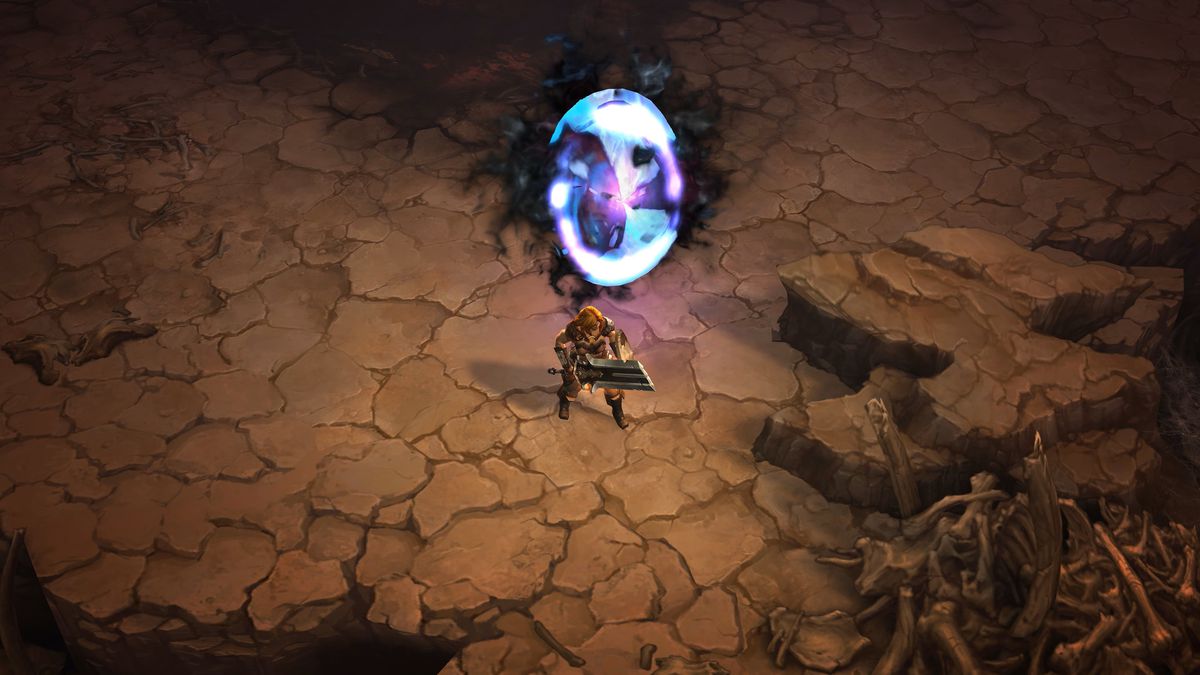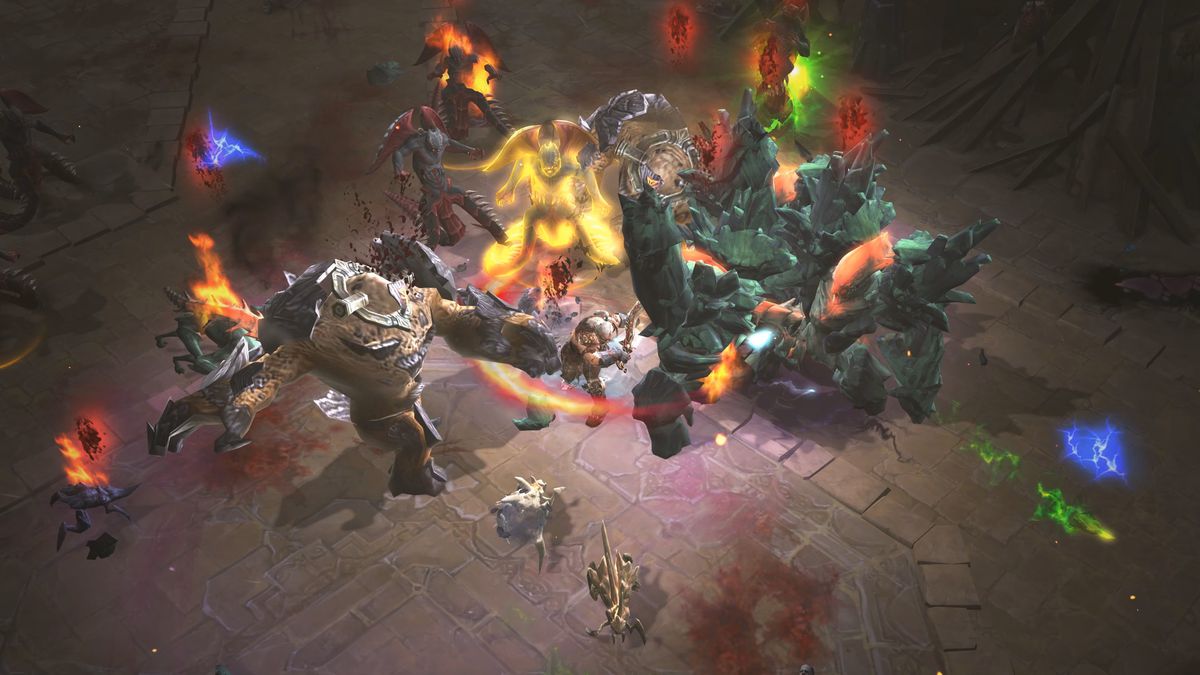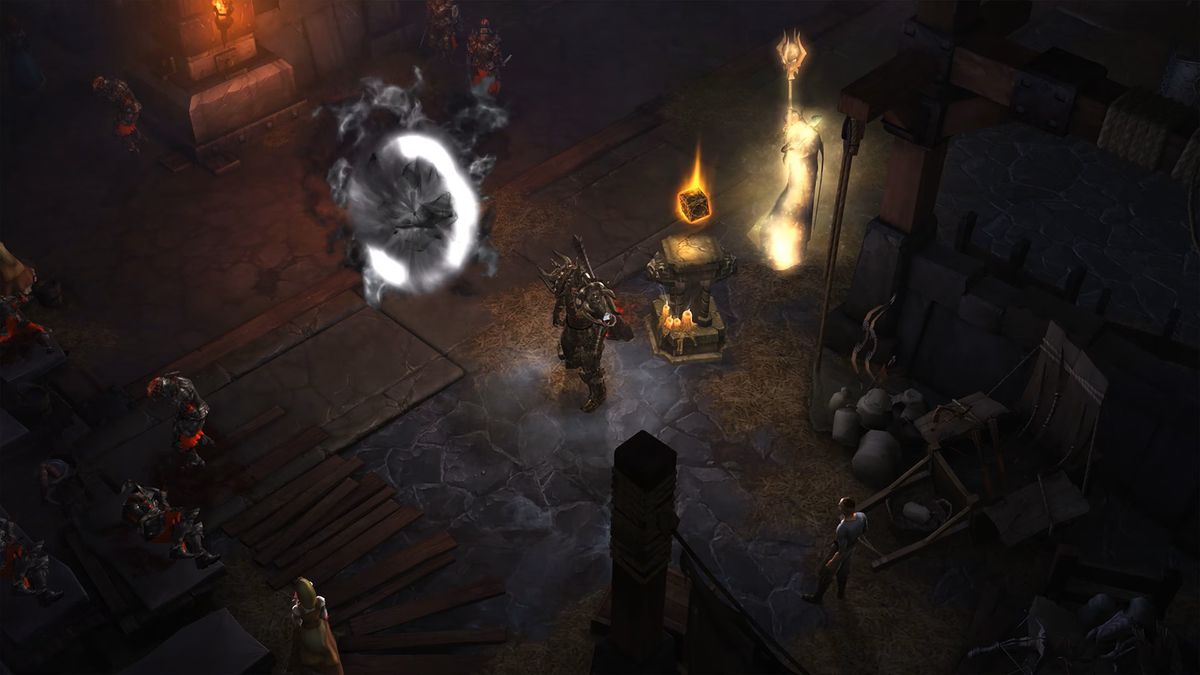Diablo 3 is not being sunsetted. But the 11-year-old game is now the oldest of the four — yes, four — Diablo games that Blizzard currently operates (the others being Diablo 4, Diablo Immortal, and Diablo 2 Resurrected), and the developer has decided that it’s time to move it into a kind of semi-retirement phase.
First, though, it gets a swan song. Sept. 15 marked the launch of the game’s 29th season, “Visions of Enmity,” which will be the last season to get its own theme and any new content. Patches and technical support will continue beyond this point, but from season 30, Diablo 3 will begin cycling through old seasonal content every three months, resting on its laurels like a legendary band touring its greatest hits.
In all honesty, seasons in Diablo 3 were never that big a deal in the first place — beyond the familiar call of a fresh start, an excuse to roll a new character and do it all over again. Blizzard only added seasons to the game in 2014 after the release of the wonderful, course-correcting expansion Reaper of Souls, and fleshed them out gradually over time with features like the Season Journey objective structure. It wasn’t until season 15 in 2018 that they acquired distinct themes and new gameplay mechanics — but even in this form, they were pretty slender updates compared to the ambitious template set by Diablo 4’s current first season, “Season of the Malignant.”
And yet, upon revisiting Diablo 3 to try out season 29, it’s hard not to be struck by the profound contrasts with its sequel — contrasts that often aren’t favorable to the new game.

The big feature of “Visions of Enmity” is Diabolical Fissures: portals that spring up at random as you slaughter your way across Sanctuary. Enter one and it summons a scene plucked at random from the game’s campaign, populated with aggressive packs of elite monsters who don’t look like they belong there. Random conditions and effects are applied, too — I’ve encountered levels staffed entirely by Rift Guardian bosses or murderous Care Bears — but there’s scarcely time to think about what’s going on. Survive and kill are the watchwords. At some point (it could be immediately), a monster kill will summon another portal to another remixed scene. And again, and again, somewhere between five and 10 times. If you get to the end, you get a fat cache of loot.
Diabolical Fissures are similar to the Nephalem Rift dungeon remixes that have been the staple of Diablo 3’s endgame since Reaper of Souls, only abstracted to an almost comical degree in the way they pounce on you while you’re doing something else, and the way they nest dungeons within dungeons within dungeons. They’re a lot of fun. They’re also a perfect demonstration of the way Diablo 3 has leaned hard into randomization ever since the advent of Nephalem Rifts and the brilliant, free-form Adventure Mode.
Diablo 3 isn’t, actually, all that big, but it is willing to shrug off consistency — sure, let’s fight off giant tree monsters and undead angels in an alien crypt, why not? — to remake itself endlessly. Diablo 4, however, is legitimately huge, but grounded. Its locations and themes make sense, and everything has a place in its physical world. But that just means you have to take time getting to where you’re going — and when you get there, it’s usually somewhere you’ve been before.
This isn’t a straight win for Diablo 3. When you’re inviting players to spend month after month, year after year, in a game world, it helps for it to feel expansive. Diablo 3 can often feel narrow and unreal, as close in its pyrotechnic immediacy to an arcade game as to a role-playing adventure. But there are other areas where, I have to say, the elder game wins a face-off hands down.

The biggest one is itemization, and the deep (or, to the point, not-so-deep) stats game. Put simply, in Diablo 3, when you get a tasty new item — especially a weapon with a decent jump in damage per second — and equip it, you immediately feel more powerful. You can sense your attacks doing more damage. It is crazy to me that this isn’t true in Diablo 4 — surely this feeling is the essence of Diablo, but here we are. Diablo 4’s extremely granular stat system and itemization, with their taste for deep theorycrafting and inch-by-inch progress in arcane bonuses like overpower damage, just don’t offer the same kick. (I still don’t know what overpower damage is, really.)
Diablo 3’s system isn’t just far more legible, with bonuses broken down into three key areas (damage, toughness, and recovery). It’s also more generous. You understand what’s improved, you can feel it in moment-to-moment gameplay — and you get this feeling often, because the game absolutely showers you in loot.
To be fair, Diablo 3 took a long road to get here. When it launched, its fundamentals were sound, but it was hobbled by an extremely parsimonious item game that hoped to usher players toward its short-lived real-money auction house. In practice, it just turned the game (which was then a hamster wheel of running the campaign on increasing difficulty levels) into a difficult, grindy, unrewarding slog. It wasn’t until the “loot 2.0” update that preceded Reaper of Souls (with groundwork laid in the first edition of the superb console version) that this got fixed. Now, you can expect to get your first Legendary item half an hour into the game, and to keep getting them at a pretty steady clip after that — all as you dot about the limitless, throwaway delights of Adventure Mode.
But Diablo 3’s systems were never designed to support this level of constantly escalating generosity, and this has created problems. The game’s math is fundamentally broken, and has been for years now. The arms race between your character’s exponential leaps in power and the monsters that constantly scale to match it quickly becomes untenable and results in weird quirks.

Very early in my season 29 run, for instance, I found it was taking me forever to kill monsters, even on lower difficulties, yet the monsters weren’t really putting a dent in my character either; we were just standing there in a scrum, comically and fruitlessly beating each other up. A few good item drops uncorked this strange blockage, but then other things cropped up — including the familiar issue with recovery (the catch-all term for self-heal bonuses like heal-over-time and heal-on-hit), whereby your character heals itself so fast that monsters can’t so much as scratch you unless they hit so incredibly hard that they can take you out in one or two huge gouges of health.
Diablo 4 doesn’t stand for this sort of thing. It’s about as well balanced as a game like Diablo can be (which is to say: not very), but it’s focused on presenting a constant, measured, chewy challenge. Boss fights are always quite hard, as opposed to Diablo 3, where they tend to be either impossible or a pushover. This is a good thing, at least in theory. There’s just one problem: Diablo 3 is much more fun.
Blizzard released Diablo 3 in a compromised state, but then spectacularly fixed it in ways that also broke it — they just broke it for the better. They broke it in a fun way. The lesson the Diablo 3 team learned from its launch (apart from “real-money auction houses are a terrible idea”) was that balance is overrated. A game can be unbalanced in ways that delight players, that make us cackle with glee. Why not?
This sense of abandon happens to chime with another, more controversial aspect of Diablo 3: its flamboyant, defiantly cheesy, over-the-top persona. Your character chips in with an orgasmic “Ohhh, so satisfying!” when you level up, and hangs out with the cackling ghost of an evil sorcerer who looks like Ming the Merciless. Diablo 2 fans, raised on grainy, grimdark horror, scorned its colorful, Warcraft-y ways. If they can’t forgive Diablo 3 for its essential cheerfulness, I hope they can at least see how well that attitude suits the game that it eventually became.
All of that said, there is something disposable about Diablo 3. It’s easy to play it with fervor, but also quite easy to leave it behind. And while it is a joy to revisit, I’m not sure I’ll ever get fully lost in it again. It is, after all, getting on — a rockstar in semi-retirement. Beside it, Diablo 4 offers something pleasingly modern and substantial, something that feels like it can offer more variety in its loops and flavors, and that’s engineered for the long haul in ways that 3 never was. I don’t want to abandon 4 to play 3 instead, but I do want 4 to be more like 3: more immediate, more gratifying, more random. And Diablo 3’s own history shows that it can get there, if Blizzard is willing to break it in the name of fun.
- SEO Powered Content & PR Distribution. Get Amplified Today.
- PlatoData.Network Vertical Generative Ai. Empower Yourself. Access Here.
- PlatoAiStream. Web3 Intelligence. Knowledge Amplified. Access Here.
- PlatoESG. Carbon, CleanTech, Energy, Environment, Solar, Waste Management. Access Here.
- PlatoHealth. Biotech and Clinical Trials Intelligence. Access Here.
- Source: https://www.polygon.com/23885679/diablo-3-vs-diablo-4-season-29



